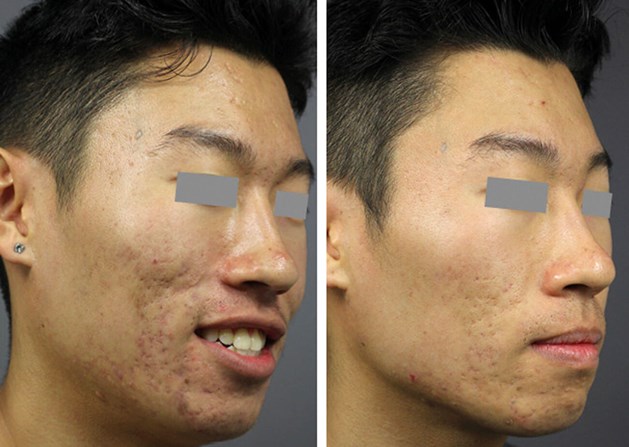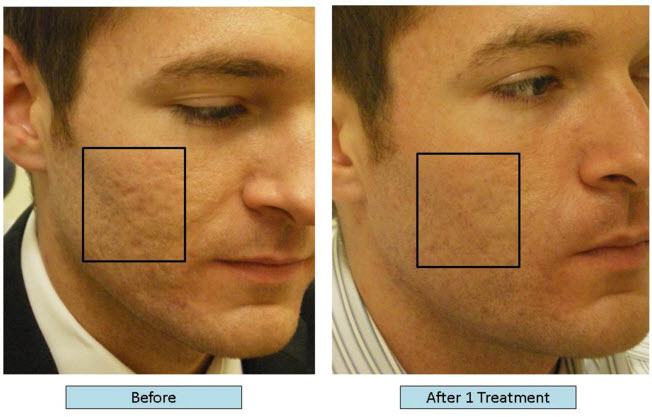Recognizing the Various Skin Disease and Effective Treatment Alternatives for Acne Marks
Acne marks stand for a complex interplay of skin conditions that significantly impact individuals' self-esteem and overall skin health. Understanding the distinct types of acne marks-- atrophic and hypertrophic-- alongside their underlying reasons, is crucial for determining reliable therapy approaches. Numerous healing choices exist, ranging from sophisticated dermatological procedures to all-natural solutions. The effectiveness of these treatments often pivots on tailored analyses by qualified professionals. As we explore the landscape of acne mark monitoring, it ends up being obvious that the journey toward more clear skin may involve greater than simply topical options.
Kinds Of Acne Scars
The two main groups of acne scars are atrophic and hypertrophic marks. These marks are further categorized right into three subtypes: ice pick marks, which are narrow and deep; boxcar marks, which are wider and have well-defined sides; and rolling marks, which create a wave-like look due to irregular skin texture.
On the other hand, hypertrophic marks result from an overproduction of collagen throughout the healing process, causing raised areas on the skin. These marks are often firm and can vary in shade, sometimes appearing red or darker than the surrounding skin.

Root Causes Of Acne Scarring
Marking takes place as an outcome of the body's natural recovery feedback to swelling and injury brought on by acne sores. When acne kinds, it activates an inflammatory reaction, leading to the launch of different cytokines and growth elements that advertise recovery. This procedure can in some cases lead to excessive cells formation or inadequate fixing, resulting in scars.
The primary reasons of acne scarring consist of the seriousness of the acne itself, duration of the sores, and private skin types. Extreme inflammatory acne, such as cysts and nodules, is much more likely to cause scarring as a result of much deeper tissue damage. In addition, incorrect handling of acne lesions, such as selecting or squeezing, can intensify tissue injury and swelling, raising the probability of scarring.
Genetic tendency also plays a substantial function; individuals with a family members history of scarring go to a higher threat. Furthermore, skin kind and color can influence mark formation, as darker complexion may experience post-inflammatory hyperpigmentation, while lighter skin might create atrophic scars.

Therapy Choices for Scarring
Effective therapy choices for acne scarring vary relying on the type and seriousness of the marks. Typically classified into atrophic, hypertrophic, and keloid scars, these conditions require tailored methods for ideal outcomes.
For atrophic scars, which are defined by a loss of cells, therapies such as chemical peels, microdermabrasion, and laser treatment are generally used. These methods promote skin renewal check my blog and promote collagen production, consequently enhancing skin appearance. Subcision, a minimally intrusive treatment, can likewise work by separating coarse bands underneath the skin.
Keloid and hypertrophic marks can be a lot more testing to deal with. Choices include corticosteroid injections to lower swelling and flatten the scars. acne scars treatment. In some instances, cryotherapy or laser treatment may be advised to lessen their look
Surgical choices are offered for serious scarring, where excision or skin grafting may be necessary. It's crucial for people to consult with a dermatologist to analyze their certain scar type and talk about one of the most appropriate therapy plan. Integrating several therapies often produces the ideal results, making sure that each individual's special skin disease is resolved efficiently.
Home Solutions and Natural Solutions
All-natural solutions and natural remedy can provide an easily accessible approach for people looking for to improve the look of acne marks. Various components located in the home kitchen have actually shown potential benefits in boosting skin texture and promoting recovery.
One preferred remedy is aloe vera, understood for its anti-inflammatory and relaxing properties. Applying fresh aloe vera gel straight onto the marks can aid improve skin hydration and minimize soreness. Similarly, honey possesses all-natural anti-bacterial and moisturizing qualities that can help in mark healing. It can be made use of as a mask, left on for half an hour before rinsing.
One more effective choice is lemon juice, which functions as an all-natural exfoliant and can lighten hyperpigmentation. It ought to be utilized very carefully, as it may trigger from this source photosensitivity. Oat meal masks are likewise valuable; their gentle exfoliation can help eliminate dead skin cells while relaxing inflammation.
Vital oils, such as tea tree oil and lavender oil, can even more support scar healing due to their antimicrobial residential properties. It is critical to execute a spot test before applying any kind of solution to make sure there are no negative reactions. These all-natural options can be a corresponding technique in the journey to diminish acne marks.
Protecting Against Future Scarring
Embracing a proactive approach to skin care can substantially decrease the risk of developing future acne marks. Among the crucial techniques is to manage acne properly as it develops (acne scars treatment). This involves making use of non-comedogenic skincare items and medicines recommended by dermatologists that target acne without irritating the skin. Regular cleansing, peeling, and hydration can aid preserve skin wellness and protect against clogged up pores.
In addition, staying clear of the temptation to pick or press acne sores is important, as this can bring about inflammation and subsequent scarring. Instead, people must concentrate on applying topical treatments that advertise healing and lower inflammation. Ingredients such as salicylic acid, benzoyl peroxide, and retinoids are recognized for their efficacy in taking care of acne and decreasing scars.

Finally, preserving a healthy diet plan rich in anti-oxidants and remaining hydrated supports skin regrowth. By implementing these precautionary procedures, people can significantly reduce their danger of future scarring and advertise total skin health.
Conclusion
In final thought, a detailed understanding of acne marks, incorporating both hypertrophic and atrophic types, is important for efficient treatment methods. Customized treatments, consisting of expert therapies and home treatments, can dramatically boost skin look and appearance. Preventative actions additionally play a crucial role in minimizing future scarring. Assessment with a skin specialist remains crucial to create individualized techniques that think about private skin types and scar seriousness, ultimately enhancing the efficiency of mark administration methods.
Acne marks stand for a complicated interplay of skin conditions that dramatically effect individuals' self-worth and general skin health. The two key classifications of acne scars are atrophic and hypertrophic scars. These marks are more categorized into 3 subtypes: ice pick scars, which are deep and slim; boxcar scars, which are broader and have well-defined sides; pop over to this web-site and rolling scars, which create a wave-like look due to unequal skin texture.
A detailed appointment with a skin specialist can assist identify the most ideal intervention, taking into account the person's skin type, mark severity, and general skin health.
Consultation with a skin specialist remains critical to create personalized strategies that take into consideration individual skin kinds and scar severity, eventually enhancing the effectiveness of mark management strategies.